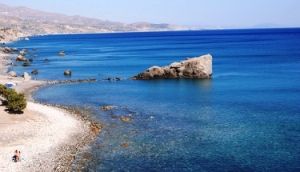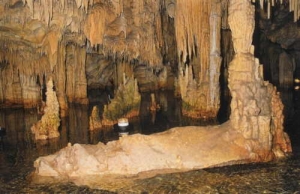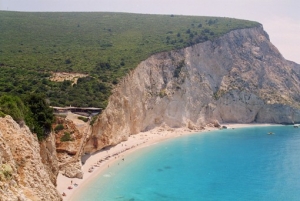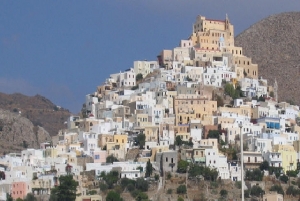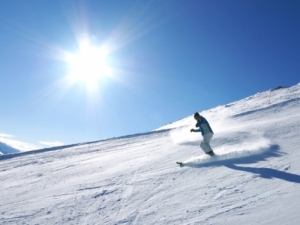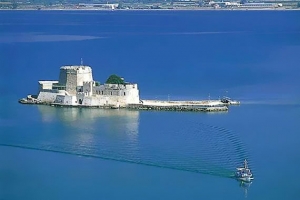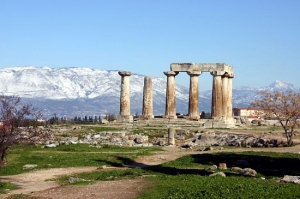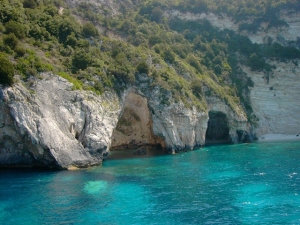Although the Swiss Alps are still numero uno for European skiers, Greece's slopes are giving Switzerland a run for the money. The snow may be wetter than one would like, and snowmaking is limited, but the December to April ski season in Greece offers ski enthusiasts the enviable attractions of stellar views, endless sun, and excellent après ski options. There are at least 20 ski resorts in Greece.
Most are small, but a handful are larger operations with more challenging trails, ski schools, rental shops, night skiing, and big lodges. Here are a few of the best.
Central Greece
The country's biggest ski center, Parnassos is located 180 km from Athens. Parnassos is made up of two sections (Kellaria Mountain and Fterolaka Mountain). There are 13 lifts (half of them chairlifts, the rest tow lifts) and 23 trails, with 14 km of skiing. Kellaria features mostly blue (easy) and red (intermediate) trails while Fterolaka's seven trails include the 1,500-meter black (expert) Sahara trail. Expect traffic and long lines on weekends and holidays. Lift rates: Kellaria weekends/holidays: 27 euros; Fterolaka weekends/holidays: 17 euros, or Kellaria/Fterolaka daily (includes both ski centers): 12 euros. www.parnassos-ski.gr.
Karpenisi (30-22370-21112; weekends/holidays 20 euros; daily 12 euros), 78 km from Lamia, has four chair lifts, a couple of tow lifts, and 11 trails for all levels. There are four lifts and six mostly easy trails on Elatohori (30-2351-072200; lift rates: weekends/holidays 13 euros; daily 10 euros), while farther south is Pilio (30-24280-73719; lift rates: weekends/holidays 16 euros; daily 12 euros), which has three peaks, five-lifts, a five-km Nordic run, and a resort perched over the sea.
Northern Greece
Thessaloniki residents looking for a day on the slopes head to Seli (30-23310-49226), 95 km away. Fifty thousand skiers a year visit the resort, which has nine lifts, 15 downhill trials (nine easy, four intermediate, three beginner) and two Nordic ski runs. There is on-the-premises lodging, a small base village, and easy driving access. Lift rates: 13 euros weekends and holidays; 10 euros daily.
Farther north, 17 km from Naoussa, is tree-flanked 3-5 Pigadia, which typically welcomes 65,000 visitors a year with seven lifts (including one chairlift) and 10 trails that can satisfy advanced and cross-country skiers alike. There's a snowboarding park and two rental shops. Weekend visitors can combine skiing there, or at Seli, with a visit to the wine-producing city Naoussa (18 kms from both). Lift rates: 12-18 euros weekends and holidays; 10 euros daily. www.3-5pigadia.gr/.
Thirty-nine km northwest of the town of Edessa, at the border with the former Yugoslav Republic of Macedonia, is Greece's highest center, Kaimaktsalan (or "Voras"), which offers 25,000 skiers a year the best dry, fluffy snow in the country. Look for one chairlift, five tow lifts, and 14 trails good for moderate skiers. There are areas for snowboarding and snowtubing, and for those who want something to warm their bones, there's a bar. Bad weather can close the lifts and the winding mountain road leading to the center. Lift rates: 15 euros weekends and holidays; 12 euros daily. www.kaimaktsalan.gr/.
The top spot for skiing in northeastern Greece is Falakro, which is visited by more than 30,000 skiers each year. True to its name, which means "bald" in Greek, the resort features wide, obstacle-free trails. You'll also find three lodges, 9 lifts (two are chairlifts), and 20 trails, including a 2,200-metre black trail and a Nordic ski trail. It is accessed by a winding mountain road. Lift rates: 15-20 euros (depending on lift package) weekends and holidays; 10-15 euros daily (depending on package). www.falakro.gr.
To read more, please visit www.fodors.com


